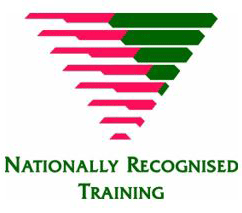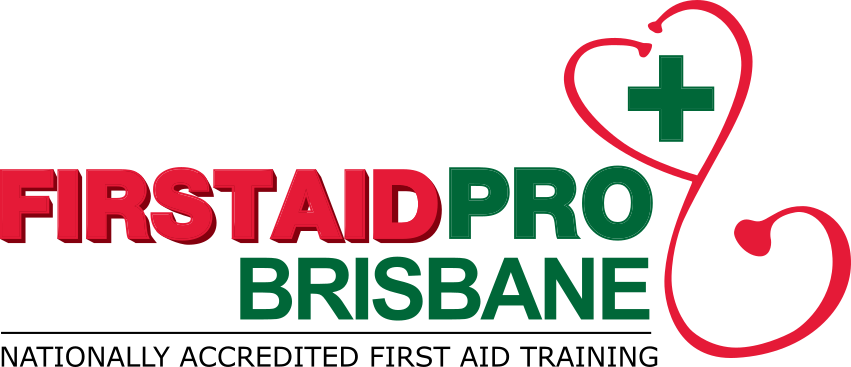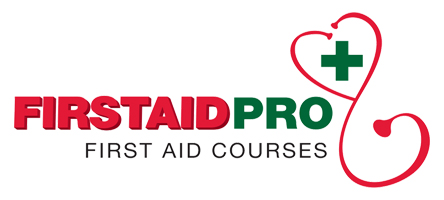Choose your training venue nearest to your location.
Course Name
HLTAID015 Provide Advanced Resuscitation and Oxygen Therapy
Course Code Included
- HLTAID009 – Provide cardiopulmonary resuscitation
- HLTAID015 – Provide advanced resuscitation and oxygen therapy
Course Duration
5 Hours – Face to Face + Pre-reading and Quiz
Course Cost
$120 (may vary)
Course Certificate
Issued Same Day (T&C)
Is the course accredited?
Yes
Does the course meet workplace requirements?
Yes
Provide Advanced Resuscitation

HLTAID015 Provide Advanced Resuscitation and Oxygen Therapy
HLTAID015 - Provide Advanced Resuscitation and Oxygen Therapy
HLTAID015 Provide advanced resuscitation and oxygen therapy has replaced HLTAID007 Provide advanced resuscitation. Learn what it takes to deliver CPR to someone in need and go above and beyond with this next level of training which includes Oxygen Therapy. Come in today and complete the course face to face with an interactive and supportive environment like no other. Please note that you must have successfully completed HLTAID011 to attend this course.
Brisbane First Aid Courses offer an online course that gives you all the knowledge of HLTAID009 Provide cardiopulmonary resuscitation, plus extra subjects like Oxygen Therapy. This course is designed for those in medical or health professional roles.
All CPR Procedures are taught in line with guidelines provided by the Australian Resuscitation Council, Safe Work Australia, Australian Society of Clinical Immunology and Allergy (ASCIA) and other national peak clinical bodies.
When enrolled in this course, you will learn CPR, AED use, how to assess vital signs, safe administration of oxygen, basic airway adjunct and more.
Why Choose Our HLTAID015 First Aid Course?
- Find a Cheaper Price, We'll Price Match
- First Aid Training with Flexible options
- Same-Day Certificate
- Accredited Certification, Nationally Recognised
- Workplace Training at your site
- Courses available 7 Days
- Royal Australian College of General Practitioners – endorsed
- Australian College of Nursing – endorsed
- Book Online or by Phone
Many First Aid Course Locations in Brisbane




HLTAID007 is now HLTAID015
HLTAID015 is the new industry standard of training and includes the following units of competency:
- HLTAID009 Provide cardiopulmonary resuscitation (formerly- HLTAID001)
- HLTAID015 Provide advanced resuscitation and oxygen therapy (formerly- HLTAID007)
Complete your course successfully in 6 hours
Your course will begin at 9 am and conclude by 2:30 pm. During this time, you will receive:
- Demonstrations of how to use equipment and use the required skills
- Practice, question time, and performance evidence on all required knowledge, led by your trainer
- Practical assessment of performance evidence through role plays, observations, written and verbal incident review/reports and class debriefs
You must complete your knowledge requirements online before attending the session.
Supportive Training Environment
Have you done your advanced resuscitation training yet? Brisbane First Aid Courses offers HLTAID015 Provide advanced resuscitation and oxygen therapy training in a single session, with zero requirements for extra online or out of classwork. Get the support and guidance you need to complete the course, all in one session!
Advanced Resuscitation Training Same Day Certificate
When you have successfully completed Brisbane First Aid Courses HLTAID015 knowledge and performance evidence criteria, you will be awarded the following units of competency.
- HLTAID009 – Provide cardiopulmonary resuscitation
- HLTAID014 – Provide advanced resuscitation and oxygen therapy
It is recommended that HLTAID009 Provide cardiopulmonary resuscitation is updated every 12 months to stay valid.


Course cost
- $120 (may vary due to daily deals)
- Price match guarantee on any similar course
Find an Advanced Resuscitation Course Near Me
HLTAID015 Provide advanced resuscitation and oxygen therapy is run out of our Brisbane training venue located at Level 7, 217 George Street Brisbane City,4000. The Queen Street Mall is right on the doorstep of the venue, and it is conveniently located close to public transport and parking.
- Brisbane CBD – Level 7 – 217 George Street, Brisbane, QLD 4000
- Indooroopilly – 284 Witton Rd, Indooroopilly, QLD 4068
- Logan – Unit 8 / 84 – Wembley Road, Logan Central, QLD 4114
- Mt Gravatt – Mount Gravatt Hotel, 1315 Logan Rd, Mount Gravatt, QLD 4122
- Salisbury – 668 Toohey Rd, Salisbury, QLD 4107
- Springfield – Springfield Tavern, Corner of Springfield Parkway & Commercial Drive, Springfield, QLD 4300
- Capalaba – Lions Club Of Capalaba 55-57 Degen Road Capalaba, QLD 4157
- Ipswich – Ipswich Show Society Office, Ipswich Showgrounds 81 Warwick Rd, Ipswich, QLD 4035
- Chermside – Chermside Bowls Club, 468 Rode Road, Chermside, QLD 4032
- Caboolture – Caboolture Lakes Entrance, Suite 4- Training Room, 8-22 King Street Caboolture, QLD 4510
- Southport – 36 Scarborough St, Southport, QLD 4215
- Palm Beach – Palm Beach Hotel, Cnr 1118 Gold Coast Hwy & 5th Ave, Palm Beach, QLD 4221
- Mooloolaba – Mooloolaba Bowls Club, Brisbane Rd & Kapala St, Mooloolaba, QLD 4557
- Maroochydore – The Sands Tavern, Plaza Parade, Maroochydore, QLD 4558
- Townsville – Cluden Park, Racecourse Rd, Cluden, QLD 4811
- Cairns – Holiday Inn Cairns Harbourside, 209-217 Esplanade, Cairns North, QLD, 4870
- Tweed Heads – Twin Towns Services Club, 2 Wharf St, Tweed Heads, NSW 2485
- Upper Coomera – The Well, 58 Highland Wy, Upper Coomera, QLD 420
- Calamvale – Calamvale Hotel, 678 Compton Rd, Calamvale, QLD 4116
- Nerang – Hinterland Hotel, 53 Station St, Nerang QLD 4211
Course requirements
Brisbane First Aid Courses can only accept and issue nationally accredited units of competency to learners who are:
- At least 14 years of age. Students under 18 must present a signed Parent or Guardian Consent Form.
- Perform at least 2 minutes of uninterrupted single rescuer cardiopulmonary resuscitation (CPR) (5 cycles of both compressions and ventilations) on an adult manikin on the floor
- Perform at least 2 minutes of uninterrupted single rescuer cardiopulmonary resuscitation (CPR) (5 cycles of both compressions and ventilations) on an infant resuscitation manikin on the floor
- Operate an automated external defibrillator (AED) to deliver at least one shock
- Provide first aid assistance for a number of conditions, including anaphylaxis, asthma, choking, envenomation, fractures, dislocations, sprains, strains, minor wounds, nosebleeds, shock, and life-threatening bleeding.
USI requirements
A USI (unique student identifier) number is a mandatory requirement for any student wishing to undertake vocational training. A USI number is unique to each student and provided by the government to keep a secure online record of your VET certificates. Find your number or register for a USI number here.
What will I learn in Advanced Resuscitation?
Regardless of the delivery mode you choose, you will be assessed in-class on your practical requirements for the course.
Knowledge requirements for face-to-face delivery are assessed in the classroom, whilst online courses have their knowledge requirements assessed online.
Throughout Provide Advanced Resuscitation, you will be assessed on:
Your understanding of:
(Knowledge/theory)
- Australian Resuscitation Council Guidelines
- Australian Society of Clinical Immunology and Allergy Action Plans
- Safe Work Australia Code of Practice
- Incident hazard and risk minimisation processes
- Infection control procedures
- Workplace or site first aid procedures
- First aid kit contents
- Education and Care Services National Law
- State Education and Care Services Regulations
- First aider Duty of Care requirements
- First aider requirements for currency of skill and knowledge
- First aider skill and knowledge limitations
- First aid parent/guardian consent
- First aid privacy and confidentiality requirements
- Stress management techniques and available support for rescuers and children
- The effect of positional change during CPR
- The appropriate duration, hand placement, compression/ventilation cycles and cessation of CPR
- Defibrillator – AED use on children
- Defibrillator – AED safety and maintenance procedures
- Chain of survival
- Accessing and handing over to emergency services
- Assessing the level of consciousness for infants and children
- Basic anatomical differences and first aid considerations between infants, children and adults
What does Provide Advanced Resuscitation Cover?
- Taking and assessing vital signs, including normal clinical values (respiration, temperature, pulse, level of consciousness)
- Secondary assessments
- Basic triage processes
- First aid procedures for the aged, elderly or infirms
- First aid procedures for major and minor workplace accidents
- First aid procedures for children
- Use of ancillary first aid equipment and coordination of resources
- advanced first aid management for abdominal injuries
- allergic reaction
- anaphylaxis
- asthma
- non-life-threatening bleeding
- life-threatening bleeding
- for burns
- cardiac conditions, including chest pain
- advanced first aid management for childbirth
- choking
- crush injuries
- diabetes
- drowning
- ear injuries, including bleeding from the ear
- envenomation
- eye injuries
- fractures
- dislocations
- sprains
- strains
- head injuries
- neck injuries
- spinal injuries
- hypothermia
- hyperthermia
- minor wounds
- shock
- nosebleed
- poisoning
- seizures
- vomiting
- sharps injuries
- for stroke
- Substance misuse
- First aider and rescuer mental well-being and support (Mental Health)
Your ability to provide effective first aid to:
(Practical /skills)
- An unconscious, non-breathing adult and child (CPR, AED, 2 rescuer CPR)
- A regurgitating or vomiting unconscious adult and child (recovery position)
- An unconscious, non-breathing infant (CPR)
- An unconscious, breathing infant (open airway)
- A casualty with anaphylaxis (ASCIA Emergency Action Plan, Epipen)
- A casualty with asthma (ASCIA Emergency Action Plan, inhaler, spacer device)
- A casualty with non-life-threatening bleeding (bandage dressing)
- A casualty in shock (reassuring them, monitoring body temperature)
- A casualty who is choking (back blows, chest thrusts)
- A casualty who has been bitten by a snake (Pressure Immobilisation Technique)
- A casualty with a fractured arm (bandage, sling)
- A casualty with a dislocated shoulder (cold compress)
- A casualty with a sprained ankle (RICER)
- A casualty with a nosebleed (apply pressure, lean forward)
- A casualty with life-threatening bleeding (tourniquet, haemostatic dressing)
- A casualty with an unknown condition (Secondary assessment, DRSABCD)
- 2 casualties with simultaneous unknown conditions (Basic triage, coordination of resources, secondary assessment, DRSABCD)
You will also be assessed on your ability to:
- Identify when to provide first aid
- Follow DRSABCD protocol
- Complete incident reports
- Handover to emergency services
Why Do I Need Advanced Resuscitation and Oxygen Therapy Training?
You are only permitted to provide oxygen if you have completed this course. If you work as a medical or health professional, it is crucial that you know how to perform these requirements.
DRSABCD protocol
Our accredited First Aid Training teaches you about the DRSABCD protocol. It’s a way of responding to medical emergencies that you can memorise. You think of DRSABCD as Drs Abcd. The letters stand for Danger, Response, Send, Airway, Breathing, CPR and Defibrillator. These represent the steps you follow in an emergency. The first thing to do is check for danger. Then you see if the casualty responds. Next, you send for emergency services. After that, you make sure the airways are clear. Then check that they are breathing and start CPR if necessary. The last thing you do is use the defibrillator.
As well as this, you practise CPR by kneeling on the floor and pushing on a manikin. We teach you according to Australian Resuscitation Council (ARC) guidelines.
Managing asthma is another important part of the course, along with knowing how to use an EpiPen in case of anaphylaxis, you will be equipped to effectively respond to the most common emergencies. Such critical skills and knowledge are essential for aged care workers, healthcare professionals and nurses. But anyone benefits from this first aid training because emergencies happen anywhere.
In summary, this course prepares you with the skills and knowledge required to respond effectively in a medical emergency.
Pre-requisites
All Students must have attained the following Nationally Recognised Unit of Competency before enrolment:
HLTAID011 Provide First Aid- you must provide evidence prior to or on the day of training that you have completed this unit of competency, failure to do this will result in you not being able to attend the class, and you will need to reschedule at a charge.
New First Aid Codes
- HLTAID009 – Provide cardiopulmonary resuscitation
- HLTAID010 – Provide basic emergency life support
- HLTAID011 – Provide First Aid
- HLTAID012 – Provide First Aid in an education and care setting
- HLTAID013 – Provide First Aid in remote or isolated site
- HLTAID014 – Provide Advanced First Aid
- HLTAID015 – Provide advanced resuscitation and oxygen therapy
- UETTDRRF06 – Perform rescue from a live LV panel
- White Card (CPCCWHS1001)
- Mental Health First Aid (MHFA)
- Medication Administration Course – Accredited
Previously known as
- HLTAID001 – Provide cardiopulmonary resuscitation
- HLTAID002 – Provide basic emergency life support
- HLTAID003 – Provide first aid
- HLTAID004 – Provide an emergency first aid response in an education & care setting
- HLTAID005 – Provide first aid in remote situations
- HLTAID006 – Provide advanced first aid
- HLTAID007 – Provide advanced resuscitation



